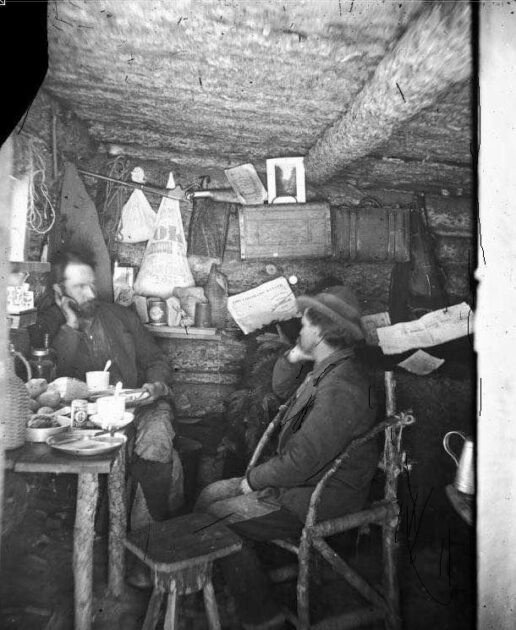In the rugged terrain of Colorado’s mining towns during the late 19th century, life was a delicate balance between the allure of untold riches and the harsh realities of everyday existence. Deep within the heart of the Rocky Mountains, nestled among towering peaks and rushing streams, lay the humble abodes of miners who braved the depths of the earth in search of precious metals. Within these rustic cabins, a microcosm of life unfolded, offering a glimpse into the challenges and triumphs of those who called the mines their home.
In the year 1890, at the height of the Colorado Silver Boom, one such cabin stood as a testament to the resilience and fortitude of its occupants. Constructed from rough-hewn timber and weathered by the elements, it stood as a sturdy refuge against the harsh mountain winters and scorching summer sun. Inside, the air was thick with the scent of pine and the lingering aroma of woodsmoke, a comforting reminder of hearth and home amidst the wilderness.
Step inside, and one would find a space that was both utilitarian and deeply personal, a reflection of the miner’s life and livelihood. At the heart of the cabin stood a cast-iron stove, its blackened surface bearing the scars of countless fires. Here, the miner would labor tirelessly to stoke the flames that provided warmth and sustenance, cooking hearty meals to nourish body and soul after long days spent toiling in the depths of the earth.
Nearby, a simple wooden table served as the focal point for meals shared with family and fellow miners alike. Here, amidst the flickering glow of kerosene lamps, stories were told, laughter echoed off the walls, and bonds were forged that transcended the boundaries of language and culture. It was a place of camaraderie and kinship, where the burdens of the outside world could be set aside, if only for a fleeting moment.
Against the walls of the cabin, rough-hewn shelves held the miner’s meager possessions – a battered tin cup, a well-thumbed book, perhaps a cherished photograph of loved ones left behind in distant lands. Each item, no matter how humble, held a story, a memory, a connection to a life that existed beyond the confines of the mine.
In a corner of the cabin, a simple cot served as the miner’s sanctuary after long days spent underground. Here, amidst threadbare blankets and worn quilts, he would lay his weary body to rest, his dreams haunted by the promise of riches yet undiscovered and the specter of danger that lurked in the depths of the mine.
Yet, for all its hardships, the miner’s cabin was also a place of hope and resilience, a testament to the human spirit’s capacity to endure and thrive in even the most unforgiving of environments. Within its walls, amidst the creaking timbers and the howling winds, the miner found solace and sanctuary, forging a life of purpose and meaning in the shadow of the Rocky Mountains.
As we reflect on the humble abodes that dotted the landscape of Colorado’s mining towns in 1890, let us not forget the men and women who called them home – the miners whose tireless labor built the foundations of a burgeoning industry, and whose indomitable spirit paved the way for generations to come. Theirs is a legacy that lives on in the heart of the Rocky Mountains, a testament to the enduring bond between humanity and the earth that sustains us all.

